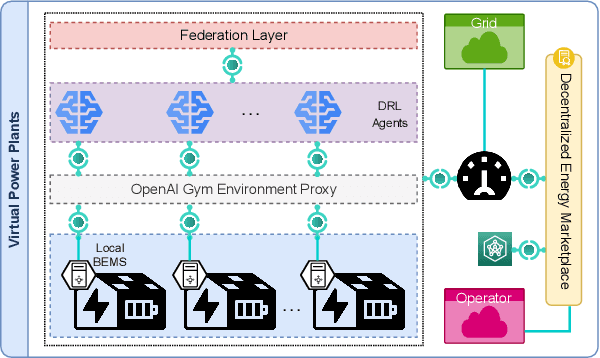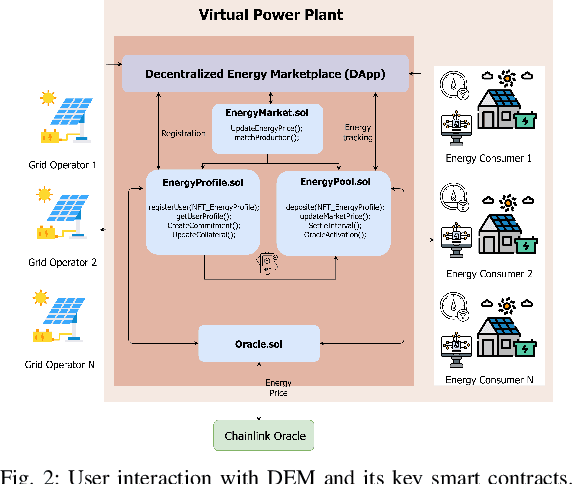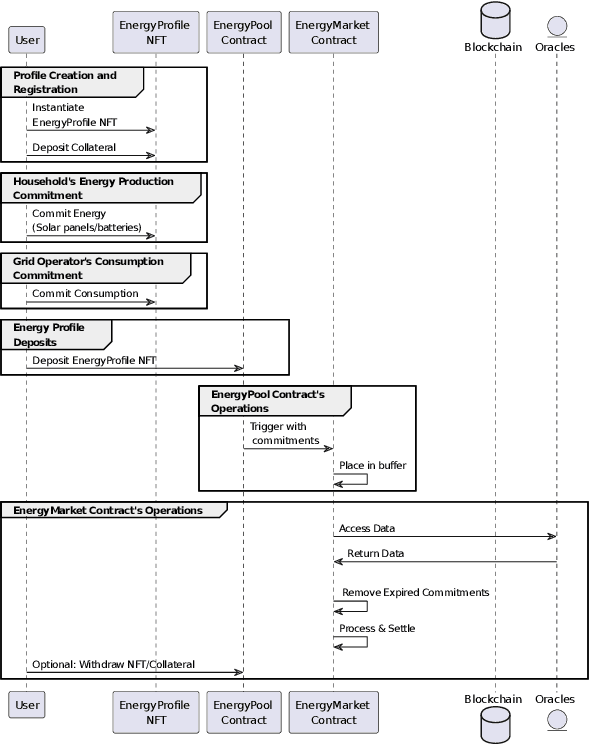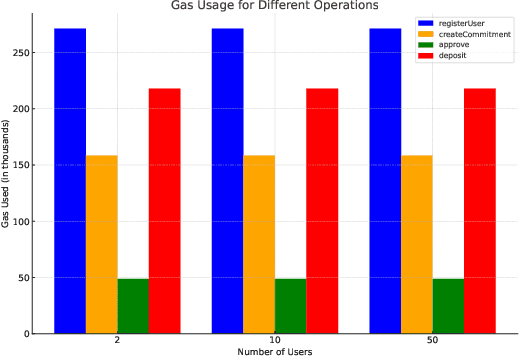Farhad Rezazadeh
Decentralized Energy Marketplace via NFTs and AI-based Agents
Nov 17, 2023



Abstract:The paper introduces an advanced Decentralized Energy Marketplace (DEM) integrating blockchain technology and artificial intelligence to manage energy exchanges among smart homes with energy storage systems. The proposed framework uses Non-Fungible Tokens (NFTs) to represent unique energy profiles in a transparent and secure trading environment. Leveraging Federated Deep Reinforcement Learning (FDRL), the system promotes collaborative and adaptive energy management strategies, maintaining user privacy. A notable innovation is the use of smart contracts, ensuring high efficiency and integrity in energy transactions. Extensive evaluations demonstrate the system's scalability and the effectiveness of the FDRL method in optimizing energy distribution. This research significantly contributes to developing sophisticated decentralized smart grid infrastructures. Our approach broadens potential blockchain and AI applications in sustainable energy systems and addresses incentive alignment and transparency challenges in traditional energy trading mechanisms. The implementation of this paper is publicly accessible at \url{https://github.com/RasoulNik/DEM}.
SliceOps: Explainable MLOps for Streamlined Automation-Native 6G Networks
Jul 04, 2023Abstract:Sixth-generation (6G) network slicing is the backbone of future communications systems. It inaugurates the era of extreme ultra-reliable and low-latency communication (xURLLC) and pervades the digitalization of the various vertical immersive use cases. Since 6G inherently underpins artificial intelligence (AI), we propose a systematic and standalone slice termed SliceOps that is natively embedded in the 6G architecture, which gathers and manages the whole AI lifecycle through monitoring, re-training, and deploying the machine learning (ML) models as a service for the 6G slices. By leveraging machine learning operations (MLOps) in conjunction with eXplainable AI (XAI), SliceOps strives to cope with the opaqueness of black-box AI using explanation-guided reinforcement learning (XRL) to fulfill transparency, trustworthiness, and interpretability in the network slicing ecosystem. This article starts by elaborating on the architectural and algorithmic aspects of SliceOps. Then, the deployed cloud-native SliceOps working is exemplified via a latency-aware resource allocation problem. The deep RL (DRL)-based SliceOps agents within slices provide AI services aiming to allocate optimal radio resources and impede service quality degradation. Simulation results demonstrate the effectiveness of SliceOps-driven slicing. The article discusses afterward the SliceOps challenges and limitations. Finally, the key open research directions corresponding to the proposed approach are identified.
 Add to Chrome
Add to Chrome Add to Firefox
Add to Firefox Add to Edge
Add to Edge